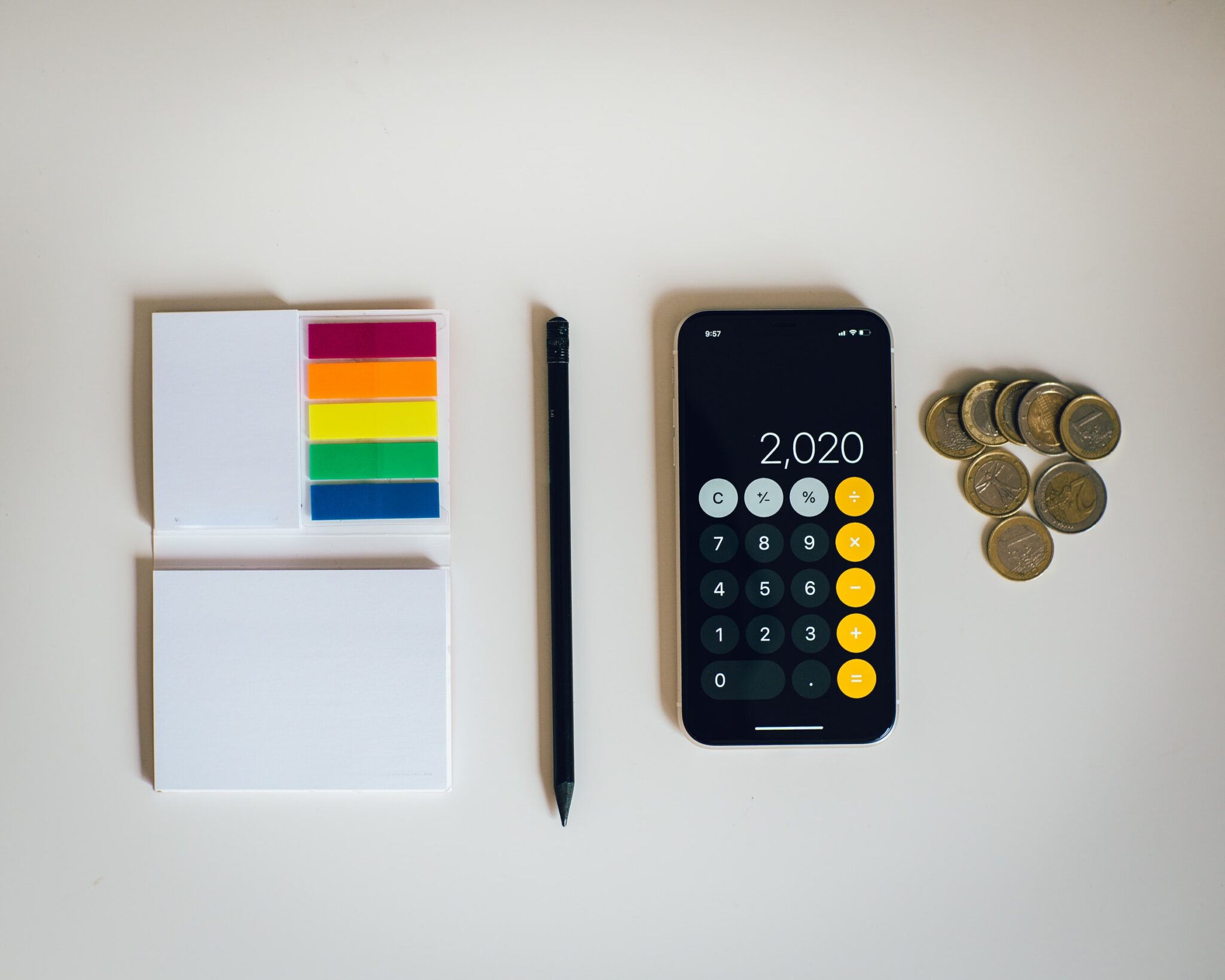FEATURED ARTICLE
How To Create Your Very First Budget

Rebekah May
January 28, 2021 •5 min read
TABLE OF CONTENTS
1. Think about why you want to create a budget:
2. Write down your monthly income:
3. Write down all your outgoings:
4. Think about how you want to spend your money:
5. Compare your spending to your income:
6. Write your budget down and then track your spending
Summary:
Ask any financial expert for advice on managing your money and we bet they’ll tell you to create your first budget.
A budget is a term commonly used to describe a detailed plan for your spending. It looks at your monthly income and then assigns a purpose for every pound.
This quote by John Maxwell sums it up perfectly - “A budget is telling your money where to go, instead of wondering where it went”.
If you find yourself wondering where the hell all your money has gone each month, then it's time you created your first budget.
You’ll feel so much more in control of your money, you’ll start hitting big financial goals, and you’ll find that you’re actually spending your money more wisely!
1. Think about why you want to create a budget:
A lot of people think that having a budget is restrictive. They see a budget as something that is going to stop them spending their money in the way they want. In reality, having a budget actually gives you more freedom to spend.
Think about each of the long-term benefits that having a budget brings, like greater control over your money. More awareness of how you’re spending. And more recognition of how much you’re saving.
You could even picture some big financial goals that you’ll achieve because of your budget. Like saving a big pot for retirement, paying off a credit card, or saving for a new car.
2. Write down your monthly income:
To create your first budget you need to know how much you get paid each month.
If you’re on a set salary where you’re paid the same amount each month then this step is fairly easy. Look at last month's payslip, or a recent bank statement to see how much you’ve been paid after tax.
If you’re paid different amounts each month, then look at your past six months' salary and work out the average amount you’ve been paid. This step will be slightly different for everyone, but the goal is to estimate your next month's income.
* Tip: Download Emma and you won’t have to search through all your bank statements. We’ll help you identify your monthly income in a matter of minutes
3. Write down all your outgoings:
This next step is a biggie, but it’s a very important step. You now need to figure out how much money you’ve been spending each month on different areas of your life.
Grab a piece of paper, or open a new excel sheet and start by listing all your fixed expenses. This will be things like bills, food, travel, child care, education - anything that you have to pay each month.
Then think about everything else you spend your money on - eating out, going to the cinema, buying new clothes, etc.
Next, gather some recent bank statements and work out how much you normally spend on each of these categories. Note down the average monthly cost of each category.
It could look something like this:
Income = £1,500 pm
Gas - £20
Electricity - £20
Council Tax - £100
Water - £30
Internet = £30
Rent - £700
Total Bills = £900
Car Insurance - £20
Petrol - £50
Oyster card - £30
Total Travel = £100
Emergency Fund - £100
Holiday Savings - £50
Investments - £50
Total Savings = £200
Groceries - £40
Eating Out - £60
Total Food = £100
Cinema - £30
Shopping - £100
Drinks - £30
Total Entertainment = £160
Total Outgoings = £1,460 pm
It’s very easy to incorrectly estimate how much money you’re spending, so it’s important that you don’t miss this step. Keep on doing this until all your recent transactions are accounted for in a category. This exercise might take a while, but knowing how much you’ve spent over the past couple of months will help you set a realistic and achievable budget.
*Tip: A budgeting app like Emma will automatically group your spending into set categories, which means you won’t have to manually calculate how much you’ve been spending. Simply head to the “Analytics” tab and click on “Budgets” in the top right corner and we’ll show you your average spend for each category.
4. Think about how you want to spend your money:
You’ve written down how much you’ve been spending. Now you should start thinking about how you really want to spend your money.
Review the list of all your outgoings and consider if you’re happy with your spending habits. Rank each of your spending categories by priority based on what’s important to you and compare how you’ve been spending so far. Add a new column to your list with the new amount you want to spend on each category.
For example, saving money could be a top priority for you, but you might find that you’re actually spending way more money on miscellaneous items than you’re adding into a savings account.
Using the budget above you might therefore want to change your spending targets so you plan to spend £40 less on shopping, and add £40 more into savings.
Thinking about your priorities in this way will help you spend more mindfully, and might also help you identify if there are any areas you can cut back on.
5. Compare your spending to your income:
By this point you’ll know how much money you have coming in every month, how much money is going out each month and you’ll have thought about any areas you’d like to change your spending habits.
Now you need to compare your budgets to your income. The example we have used above shows an income of £1,500 and a budget that equals £1,460.
If you’re in a similar situation where you’re spending less money than you earn, then you can now think about where to direct the extra cash (savings, investments, more freedom to eat out?).
If you’re spending more than you earn then you’re in a bit of a financial pickle. Review each category again and see where you’re overspending. The idea is to make sure that you're spending less than, or equal to the amount you're earning.
6. Write your budget down and then track your spending
After you’ve written your budget down, you’re then going to want to track your spending throughout the month. Make a note of everything you spend by category and try to not go over your budget.
It’s likely that your first budget will need amending a little, so make time to review it at the end of the month. After a few months you’ll get in the swing of things, and budgeting will become second nature.
*Tip: Emma can help you track your spending. Connect your bank accounts and we’ll automatically group your transactions into categories every time you spend.
Summary:
Here are our top tips on how to create your first budget. It might seem like a lot of work, to begin with, but there are a lot more pros to budgeting than cons. You’ll feel so much more in control of your money, you’ll be spending on things that truly matter to you, and you’ll have a much clearer picture of how to hit your big financial goals.
We’d love to hear if you have any more tips on how to create your first budget. Get in touch by dropping us a message on Twitter, or joining the Emma Community.
You may also like
Check out these related blog posts for more tips
© 2025 Emma Technologies Ltd. All Rights Reserved.
Emma is registered and incorporated in England and Wales.
Emma Technologies Ltd is an appointed representative of RiskSave Technologies Ltd, which is authorised and regulated by the Financial Conduct Authority (FRN 775330).
Payment services (Non MIFID or Deposit related products) for Emma Technologies Ltd are provided by The Currency Cloud Limited. Registered in England No. 06323311. Registered Office: Stewardship Building 1st Floor, 12 Steward Street London E1 6FQ. The Currency Cloud Limited is authorised by the Financial Conduct Authority under the Electronic Money Regulations 2011 for the issuing of electronic money (FRN: 900199). For more detail on how your money is protected please see here. You can also find Currency Cloud's Terms of Use here.
Emma Technologies is an Introducer Appointed Representative of Quint Group Limited and not a lender. Quint Group Limited is authorised and regulated by the Financial Conduct Authority (Firm Reference Number 669450). Monevo Limited is an Appointed Representative of TransUnion International UK Limited. TransUnion is authorised and regulated by the Financial Conduct Authority (Firm Reference Number 737740). Emma Technologies introduces customers first to Quint Group Limited, as a licensed credit broker, who then refers on to Monevo Limited.
Emma is registered with the Financial Conduct Authority under the Payment Services Regulations 2017 for the provision of payment services.
Financial Conduct Authority Reg Nr: 794952.
Company Registration Number: 10578464.
Data Protection Registration Number: ZA241546.
All testimonials, reviews, opinions or case studies presented on our website may not be indicative of all customers. Results may vary and customers agree to proceed at their own risk.
Resources: Cancel subscriptions, Cashback offers, Who charged me, Rent Reporting, Budgeting, Investment universe, Emma vs Moneyhub.
Featured cashback offers: Samsung, SimplyCook, NordVPN, Audible, M&S Homeware.









